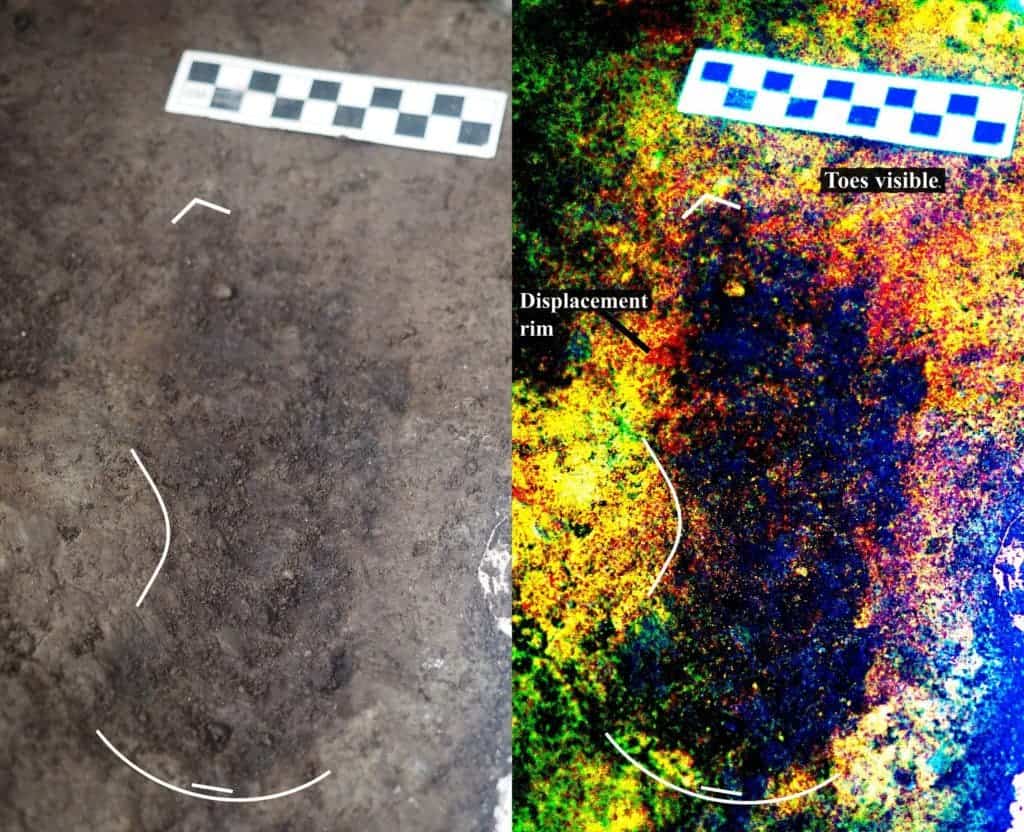Scientists were thrilled to identify the ancient footprint, confirming that humans came to North America at least 13,000 years ago. It’s the clearest smoking gun you could ask for.

Canada’s Pacific Coast isn’t the nicest place to go looking for archaeological remains. It’s covered by thick, lush forests, and much of it is only accessible by boat. But scientists weren’t deterred by this. They excavated intertidal beach sediments on the shoreline of Calvert Island, British Columbia.
After a painstaking analysis, they identified 29 human footprints of at least three different sizes in these sediments. Using enhanced photography, they were able to clearly distinguish the footprints, and conclude that they probably belonged to two adults and one child, all barefoot.
“This article details the discovery of footprints on the west coast of Canada with associated radiocarbon dates of 13,000 years before present,” says Duncan McLaren, lead author of the study. “This finding provides evidence of the seafaring people who inhabited this area during the tail end of the last major ice age.”
At the end of the last ice age, sea level was 2-3 meters lower than it is today. This provides evidence that peoples in the Americas were using watercraft and exploring and thriving in coastal areas, McLaren told ZME Science. Along with the footprints, archaeologists also found several artifacts, indicating that people were passing through the area.
“We found a few stone tools with the footprints. We found them while subsurface testing for archaeological deposits dating between 14,000 and 10,000 years ago use the local sea level history as a guide,” McLaren added for ZME Science.
This finding adds to the growing body of evidence supporting the hypothesis that humans used a coastal route to move from Asia to North America during the last ice age. The authors suggest that further excavations with more advanced methods are likely to uncover more human footprints in the area and would help to piece together the patterns of early human settlement on the coast of North America.
Currently, researchers are carrying out preservation work around the footprints, also looking for similar areas which might yield valuable traces of ancient civilizations.
“We have stopped excavating the footprint to preserve them for future generations. Our research now turns to finding other areas on the coast that may have been ice free during the last ice age,” McLaren concluded.
Journal Reference: McLaren D, Fedje D, Dyck A, Mackie Q, Gauvreau A, Cohen J (2018) Terminal Pleistocene epoch human footprints from the Pacific coast of Canada. PLoS ONE 13(3): e0193522. https:/






